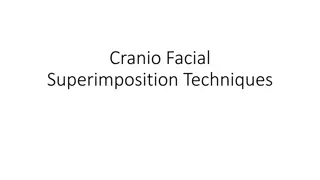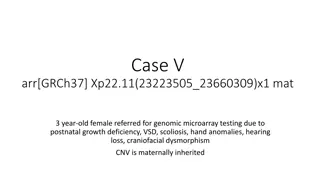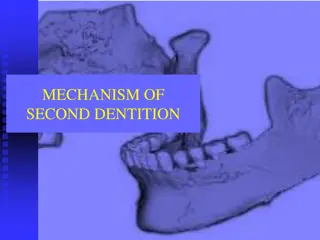Understanding Craniofacial Superimposition Techniques in Forensic Anthropology
Craniofacial superimposition is a valuable technique used in forensic anthropology for identifying skulls by overlaying them onto photographs or videos of missing persons. The method involves various techniques such as Photographic Superimposition, Video Superimposition, and Roentgenographic Superim
6 views • 20 slides
Enhancing Research Data Stewardship for Craniofacial and Dental Studies
Explore the comprehensive resources provided by the FaceBase platform for craniofacial and dental research, featuring detailed tours, data organization insights, and a collaborative framework. Learn how the platform facilitates data sharing, boosts reproducibility, and supports a global research com
0 views • 6 slides
Genetic Findings in a Female Patient with Developmental Disorders
A 3-year-old female patient (Case V) with postnatal growth deficiency, VSD, scoliosis, hand anomalies, hearing loss, and craniofacial dysmorphism was referred for genomic microarray testing. Maternal inheritance of a CNV was identified. Research on PTCHD1 disruptions in males and carrier females hig
0 views • 12 slides
Understanding the Mechanism of Second Dentition in Humans
Second dentition is a natural process involving the development of a second set of teeth in humans. This complex phenomenon includes factors like root development, periodontal changes, and functional occlusion. The process is crucial for normal craniofacial development and has implications for ortho
0 views • 24 slides
Paediatric Anaesthesia Case Discussion: Challenges of Anaesthetizing an Infant with Pierre Robin Syndrome
Pierre Robin Syndrome (PRS) presents challenges in paediatric anaesthesia, especially in infants undergoing procedures like cleft lip repair. PRS is characterized by micrognathia, glossoptosis, and respiratory distress. Other syndromes associated with cleft lip include Treacher Collins syndrome, Gol
0 views • 56 slides
Exploring the Impact of Bullying Through the Film "Wonder
The film "Wonder" delves into the challenges faced by Auggie, a boy with a craniofacial malformation, as he navigates school life and experiences bullying. Through activities post-viewing, students are encouraged to embrace diversity, transform insecurities into strengths, and cultivate kindness. Th
0 views • 10 slides





